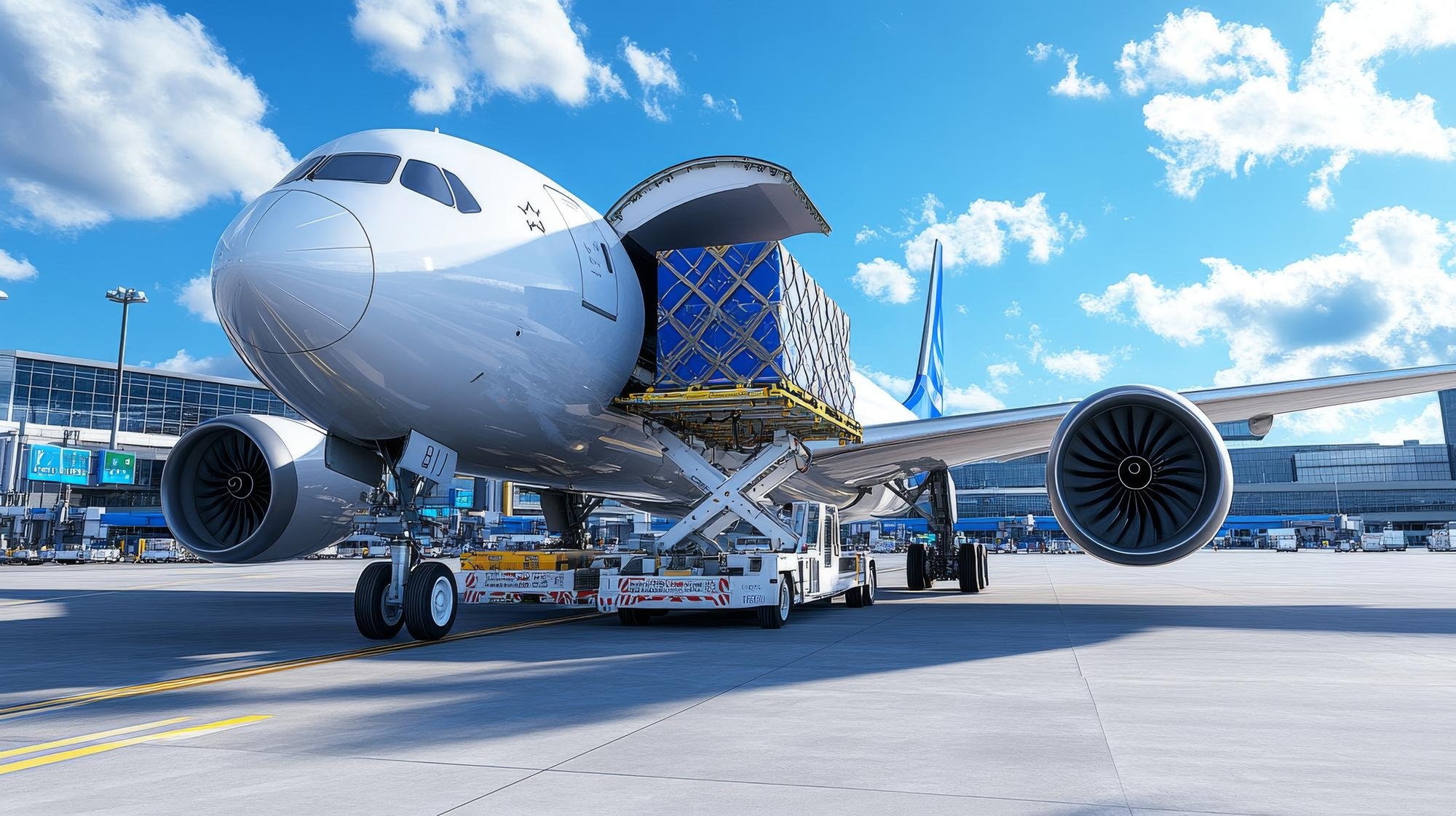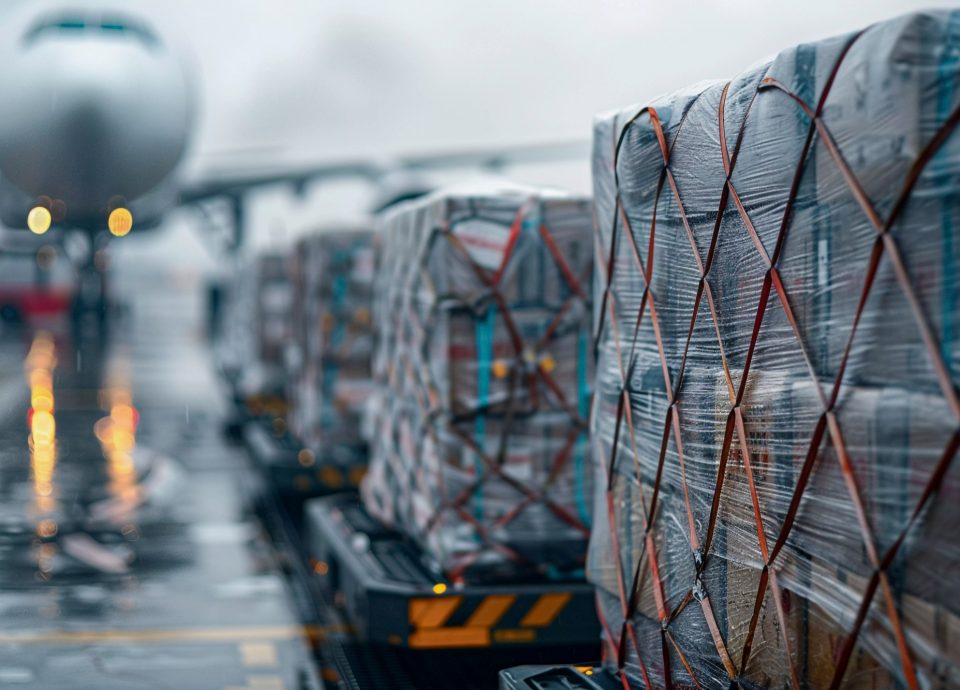If your business depends on speed, predictability, and pristine product condition, you’ve likely considered air cargo transportation. From life-saving pharmaceuticals and precision electronics to urgent automotive parts and luxury retail items, air cargo transportation compresses days into hours, shrinks risk exposure, and turns logistics into a strategic advantage. This practical, no-fluff guide walks you through exactly how air cargo transportation works—end to end—so you can plan confidently, budget accurately, and keep customers delighted.
Sprinter Emergency Transport Inc. has engineered thousands of time-critical moves across North America and around the world. Drawing on that experience, we’ll decode the process, highlight common pitfalls, and share proven tactics to make air cargo transportation faster, safer, and more cost-effective.
What Is Air Cargo Transportation?
Air cargo transportation is the movement of goods by aircraft—either in the belly of passenger flights or aboard dedicated freighter planes—supported by specialized airport handling, security screening, customs processes, and tightly choreographed first-mile/last-mile trucking. Unlike slower modes, air cargo transportation reduces the number of handoffs, shortens time in transit, and uses secure, controlled environments to lower damage and theft risk.
Why businesses choose air cargo transportation
- Speed that preserves value and revenue timelines
- Predictable schedules and multiple daily departures on key lanes
- Controlled handling for fragile, perishable, or high-value items
- Global reach, including landlocked or infrastructure-challenged markets
Passenger belly vs. freighter aircraft
-
Passenger belly: High frequency, ideal for smaller, urgent consignments.
-
Freighter aircraft: Larger doors, higher volumetric capacity, and flexibility for outsized cargo or active temperature containers—often the best fit for complex air cargo transportation needs.
The Step-by-Step Process of Air Cargo Transportation
Understanding each stage helps you budget precisely, set realistic ETAs, and avoid avoidable delays. Here’s the full journey of air cargo logistics from pickup to POD (proof of delivery).
Step 1: Planning and Capacity Booking
The clock starts before the truck arrives. Your logistics partner confirms service level (next-flight-out, standard, or charter), secures airline space, and prepares alternates in case of disruption. Early planning makes air cargo transportation faster and more resilient.
What to confirm up front
- Dimensions/weight (to calculate chargeable weight)
- Temperature or dangerous goods requirements
- Required delivery window and acceptable alternates
- Who pays duties/taxes (Incoterms)
Step 2: Packaging and Labeling
Proper packaging eliminates rework and reduces damage risk. For air cargo logistics, use light yet strong materials, block and brace the item internally, and mark handling symbols clearly.
Best practices
- Shock/tilt indicators for fragile goods
- Internal bracing, edge/corner protection
- Clear consignee details and AWB number on outer cartons
- For perishables: validated passive or active thermal solutions
Step 3: Documentation Preparation
Accurate documents keep air cargo transportation moving. Expect to prepare the Air Waybill (AWB), commercial invoice, packing list, and any required certificates or permits. Misalignments (e.g., values, HS codes, piece counts) are the most common cause of customs delays.
Checklist
- Commercial invoice matches packing list and AWB
- Correct HS codes and declared values
- Licenses/permits for controlled commodities
- Consignee tax IDs where required
Step 4: First-Mile Pickup and Terminal Acceptance
A secure truck collects the shipment and tenders at the airline cargo terminal. Properly prepared, screen-ready freight advances quickly. This stage is critical to keeping air cargo transportation on schedule.
Speed tips
- Tender early in the day to hit more departures
- Ensure pallets/ULD-friendly dimensions
- Pre-alert the terminal with accurate dims and weights
Step 5: Security Screening and Build-Up
In Canada, cargo must comply with Transport Canada’s Air Cargo Security Program, which governs screening and chain-of-custody. Once screened, freight is built onto airline pallets or loaded into ULDs for uplift. Clean screening is the backbone of compliant air cargo logistics.
-
Transport Canada – Air Cargo Security Program
Step 6: Uplift and Linehaul Flight
The shipment is uplifted and flies to the destination hub or directly to the final airport. Real-time milestone scans (received, screened, built, departed) create visibility that makes air cargo transportation predictable and auditable.
If things change
- Weather/ATC disruptions: reflight via alternates
- Capacity pinch: split the lot across consecutive departures
- Reroute via nearby hubs to preserve ETA
Step 7: Arrival and Import Clearance
Upon arrival, freight posts landed scans, then proceeds to customs. Pre-filed entries with accurate data accelerate clearance—a cornerstone of fast air cargo transportation.
-
Canada Border Services Agency – Commercial Importing
Clearance accelerators
- Accurate HS codes and values
- Complete consignee data and tax IDs
- Consistent Incoterms and payer of charges
- Supporting certificates (origin, MSDS, phytosanitary) on hand
Step 8: Recovery and Bonded Cartage
After customs release, freight is recovered from the airline warehouse and moved by bonded cartage or standard delivery. Appointment control and white-glove options (for high-value cargo) reduce destination dwell and safeguard the final steps of air cargo logistics.
Step 9: Final Delivery and POD
The shipment is delivered to the consignee, and POD (proof of delivery) is captured with time, date, and receiver details. Exception notes, if any, are logged for full shipment traceability. This completes the air cargo transportation cycle.
Cost Fundamentals in Air Cargo Transportation
Air rates are typically higher per kilogram than ocean or deferred ground, but raw tariff comparisons miss the bigger picture. You should calculate total landed cost and time value.
What drives price
- Chargeable weight: The higher of actual vs. dimensional (L×W×H/6000 or airline factor)
- Service level: NFO/express vs. standard vs. charter
- Lane and seasonality: Peak seasons tighten capacity
- Special handling: Temperature control, DG, secure storage
- Airport fees: Screening, terminal, and security surcharges
How to control spend without losing speed
- Optimize carton sizes to reduce volumetric weight
- Tender earlier to access lower-cost flights with workable ETAs
- Split shipments: send the critical portion via air cargo transportation and defer the balance
- Use standard air for routine replenishment; reserve NFO for true emergencies
Packaging & Handling for a Zero-Drama Move
Design for the real world
Air cargo transportation includes forklifts, conveyors, and ramp exposure. Pack for shock, vibration, and compression—and label accordingly.
Quick packaging wins
- Use double-wall cartons or lightweight crate systems
- Block/brace fragile items internally
- Tilt/shock indicators for accountability
- Desiccants/barriers for humidity-sensitive goods
Cold chain specifics
- Pre-condition passive packouts
- Validate hold times end-to-end
- For long routes, consider active containers with telemetry
- Log temperature to create a defensible record
Compliance, Security, and Quality in Canada
Air cargo transportation is governed by robust rules to protect passengers, crews, and cargo integrity.
Pillars of compliance
- Transport Canada security: Screening, secure chain-of-custody, and authorized facilities
- CBSA customs: Accurate declarations, duties/taxes management, and audit-ready records
- IATA DG rules: Classification, packaging, and labeling for lithium batteries and other hazmat
- GDP/cold chain: For pharma, documented controls and validated equipment
A disciplined process prevents the slow-downs that derail air cargo transportation.
Technology & Visibility: See What Matters, When It Matters
Modern platforms make air cargo transportation transparent:
What you should see
- Milestones: received, screened, built, departed, arrived, customs status, recovered, out for delivery, POD
- Exceptions: weather holds, reflight updates, temperature excursions
- Data feeds: API/EDI into your TMS/ERP for operations and finance sync
Why it matters
Live data lets your team re-prioritize orders, alert customers, and schedule docks. Visibility turns air cargo transportation from “fast” into “predictably fast.”
When to Choose Air Cargo Transportation (and When Not To)
Perfect fits
- Time-sensitive and high-value goods
- Line-down manufacturing or service outages
- Seasonal launches and event-driven inventory
- Perishables and strict cold-chain requirements
- High-shrink corridors where security is paramount
Consider alternatives
If cargo is heavy, non-urgent, and price-sensitive, defer to ocean or road for the bulk—then reserve air cargo transportation for the critical fraction to hedge risk.
12 Quick Wins to Speed Up Air Moves
- Tender freight before noon to reach more same-day lifts.
- Pre-file customs entries with complete invoice data.
- Standardize carton footprints to avoid volumetric surprises.
- Keep emergency AWB templates pre-approved.
- Use split shipments to hedge disruption.
- Stage bonded cartage before flight arrival.
- Put SLAs on screening/warehouse turn times.
- Share ASNs so receivers prep docks and staffing.
- Validate thermal packaging in real route conditions.
- Map weather alternates for each season.
- Photograph packouts for insurance and QA.
- Confirm Incoterms and payer responsibilities in writing.
Small changes compound into hours saved across air cargo transportation.
Common Mistakes that Slow Air Cargo Transportation
- Missing or mismatched HS codes/values on documents
- Over-dimensional cartons that force rebuilds at the terminal
- Under-declared lithium batteries or misclassified DG
- No alternates; one cancelled flight causes a 24-hour slip
- Late tendering that misses the day’s best departures
Fix these, and your air cargo transportation becomes reliably fast.
Why Choose Sprinter Emergency Transport Inc.
When minutes matter, you need more than a booking—you need orchestration. Sprinter Emergency Transport Inc. designs and executes air cargo transportation with a bias for speed, compliance, and transparency.
What we deliver
- Priority capacity: Access to passenger belly space, freighters, and charters—so your air cargo transportation lifts even in peak season.
- 24/7 operations: Named escalation contacts and rapid exception recovery.
- Compliance baked in: DG/lithium expertise, validated cold chain, and meticulous documentation.
- Secure handling: Screen-ready tender, tamper-evident seals, vault options, and bonded cartage.
- Real-time visibility: API/EDI feeds, milestone scans from tender to POD, and temperature telemetry when required.
- Transparent pricing: Itemized quotes that match invoices—no gotchas.
If the goal is fast, compliant, and predictable air cargo transportation, our team is built for it.
Saving a Product Launch
A consumer-tech client faced a launch-critical shortage at European distribution centers. We executed split-lot air cargo transportation across consecutive departures, pre-filed customs with complete data, and staged bonded cartage before aircraft arrival. Result: stores received on time, marketing went live as planned, and the launch window—and revenue—were preserved.
Turn Speed into Strategy with Air Cargo Transportation
In high-stakes logistics, speed isn’t a luxury—it’s leverage. By mastering the steps, documents, and decisions outlined here, you can make air cargo transportation a dependable engine for revenue, resilience, and customer trust. Whether you’re protecting cold-chain integrity, preventing line-down emergencies, or hitting immovable retail dates, the right plan and partner turn risk into results.
Sprinter Emergency Transport Inc. is ready to design your next air cargo transportation move—fast, compliant, and visible from pickup to POD. Tell us your lane and deadline, and we’ll deliver a flight-ready plan today.
Frequently Asked Questions:
1) What documents are required for air cargo transportation?
You’ll need a commercial invoice, packing list, and an Air Waybill at minimum. Depending on commodity and lane, air cargo transportation may also require certificates (origin, phytosanitary, MSDS), export permits, or import licenses, all aligned with correct HS codes and declared values.
2) How is chargeable weight calculated in air cargo transportation?
Airlines bill the higher of actual weight or dimensional weight (based on L×W×H divided by the airline’s factor). Optimizing packaging to reduce volume can meaningfully lower air cargo transportation costs without risking protection.
3) When should I use air cargo transportation instead of ocean or road?
Choose air cargo transportation for time-critical, high-value, fragile, or temperature-sensitive shipments, for line-down prevention, or when immovable deadlines or security risks make speed and control essential.
4) How can I speed up customs during air cargo transportation?
Pre-file entries with accurate data, use consistent HS codes/values across documents, confirm Incoterms and payer responsibilities, and coordinate closely with a broker who understands air cargo transportation at your origin and destination airports.
5) Is cold chain feasible with air cargo transportation?
Yes. Use validated passive packouts or active containers with telemetry, choose routings with shorter tarmac exposure, and log temperatures end-to-end. Cold-chain air cargo transportation is standard for pharmaceuticals and perishables.
6) How do I reduce the cost of air cargo transportation without sacrificing speed?
Right-size packaging to cut dimensional weight, tender early to access more flight options, split emergency vs. non-urgent quantities, and select standard air for routine replenishment while reserving express air cargo transportation for true crises.
7) What kind of visibility should I expect during air cargo transportation?
Look for milestone scans from receipt to POD—screened, built, departed, arrived, customs status, recovered, out for delivery—plus exception alerts and API/EDI integration with your systems. Real visibility makes air cargo transportation reliably fast.




